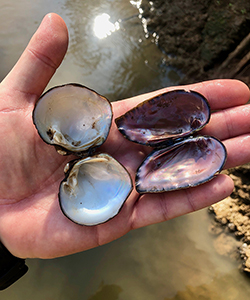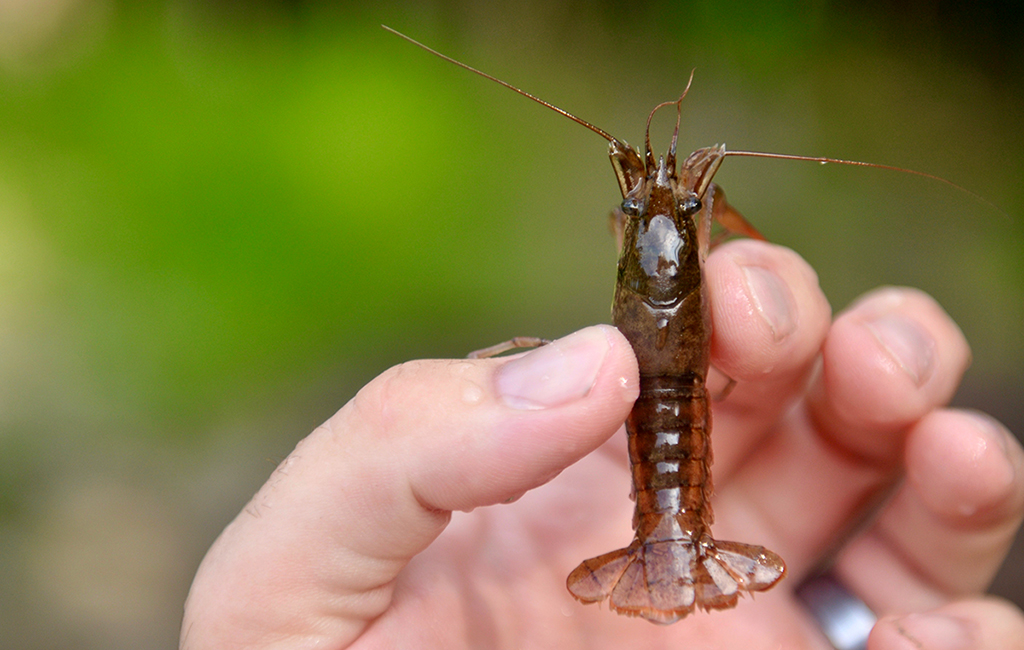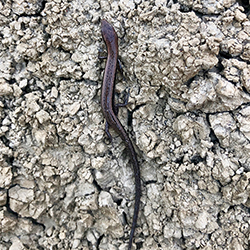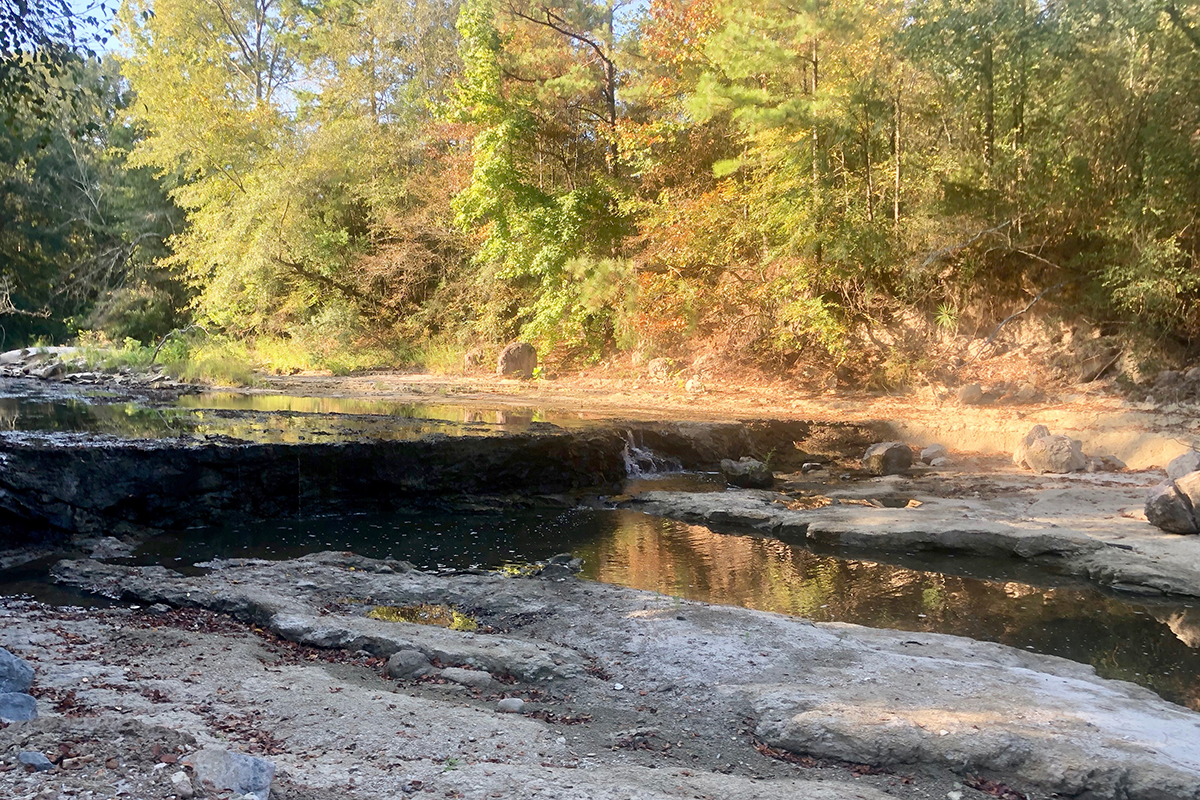
Researchers can learn about the life of a river without seeing the animals that live there.
Photo by Mark A. Davis
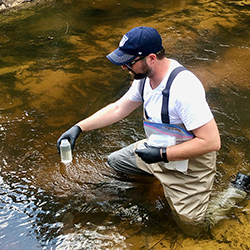
INHS conservation biologist Mark Davis collects water samples for eDNA analysis.
Photo by Eric Larson
FORT POLK, La. - It's morning on the bayou. I'm in the Calcascieu River at the Fort Polk Joint Readiness Training Center in Louisiana, and the river is teeming with life. The bank is littered with freshwater mussel shells, no doubt a feast for a raccoon last night. Cricket frogs bounce around at my feet as if loaded with tiny coiled springs.
My boot breaks the surface of the water and sinks into the mucky sediment on the bottom. The slow current wraps around my leg, carrying a sediment plume lazily downstream. I take another step, mindful of what might be lurking below the surface: logs, old tires, alligators. I wade carefully, carrying an armful of 1-liter bottles (three empty, one full) in a 1-gallon zip-top bag.

Environmental DNA methods allow scientists to harness DNA from water, soil and even the air to learn what lives in it.
Photo by Mark A. Davis
As I reach the far bank, I pull out a labeled bottle and unscrew the cap. I'm wearing waders, so I can kneel in the knee-deep water to dip the bottle in the muddy water. A crayfish - swimming backward, as they do - darts away from me, searching for cover.
I fill the bottle, rinse it and dump the water back into the river three times. The fourth time I fill it, cap it and put it back in the bag. I wade to the middle of the river and repeat, then I return to the bank where I entered and repeat.
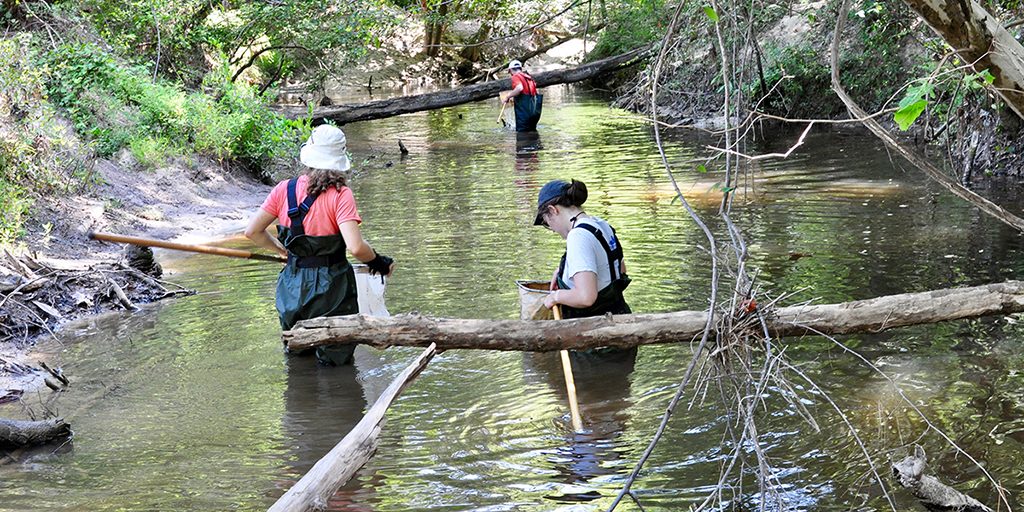
Scientists pair conventional sampling with eDNA to understand the distribution of at-risk aquatic species.
Photo by Mark A. Davis
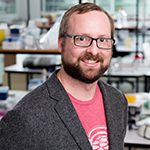
Illinois Natural History Survey conservation biologist Mark Davis is the director of the INHS Collaborative Ecological Genetics Laboratory.
Photo by L. Brian Stauffer
Two turtles surface in the current, peering at me as if they wonder what I'm up to. What I'm after isn't anything anyone can see, but what is in the water. I'm here to screen for environmental DNA for at-risk aquatic species. All species constantly shed genetic material - in the form of skin, scales or other bits of tissue - into their surroundings. By sampling the water, we can filter out this "eDNA" and gain vast amounts of biological information from it.
At over 240,000 acres, Fort Polk is among the largest military installations in the U.S. and is home to incredible biodiversity. Today, my quarry include the Kitastchie painted crayfish, the Calcasieu painted crayfish, the Louisiana pigtoe mussel, the triangle pigtoe mussel and the alligator snapping turtle. My team is documenting where these species occur across the military site. Using modern chemistry and cutting-edge technology, we can screen these water samples for these species and pinpoint their location, without ever seeing them.
As I clamber up the muddy riverbank, a lizard known as a skink zips ahead of my boots. I place my samples on ice in a cooler in the bed of my pickup, close the tailgate, climb into the cab and head for the next site. One down, 28 to go.

